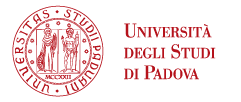
The Dark Side of the Belle Époque. Political violence and Armed Associations in Europe before the First World War — PREWArAs’
The research project “The Dark Side of the Belle Époque. Political Violence and Armed Associations in Europe before the First World War” is a comparative historical investigation which examines the role played by militias, paramilitary movements, armed organisations, and vigilante groups before the First World War (from the late 19th century to 1914). Its goal is to investigate how and to what extent organised political violence permeated European societies even before the outbreak of the Great War.
The practice of organised violence represents a mass transnational experience in an era – the so-called Belle Époque – which has generally been seen as characterised by peace and progress. Hundreds of thousands of male Europeans engaged in various violent practices as members of these groups. Examples are the Spanish militia Somatén (44,000 members in 1909); the Ulster Volunteer Force, a paramilitary organisation which fought against the Irish nationalists (100,000 men, at least); and the large number of shooting clubs and military training societies which characterised the daily life of European citizens all over the continent.
The project seeks to compare the practices, social backgrounds and political cultures of these groups, and their connections with more general contexts (state, Church, other social movements and political cultures), in all major states of pre-WWI Europe: Germany, the Austro-Hungarian Empire, Italy, France, Spain and Portugal, and the United Kingdom. All these different forms of organised violence may be defined as armed associations. In pre-WWI Europe, an armed association may be defined as non-state organisation of male civilians that acts publicly and in which the practice of violence is a legitimated course of action. Violence may be experienced as either an actual or potential practice. Often, violence is implemented and put into effect (e.g. against opponents); other times, it is simply experienced as a possibility and potentiality, albeit a fully legitimate and plausible one (e.g. through military training).
The stress on the legal organisation and public actions of armed associations is important because it enables us to distinguish armed associations from illegal terrorist groups. Another central element in this definition is its gender-oriented character: early 20th century Europe was an almost exclusively male dominated society and the practice of violence was a source of masculine authority and activity. Masculinity and male cultures are key elements which influenced the individual and collective identity, practices, and political cultures of the members of armed associations both in their direct expressions (beatings, patrols, counter-strike activities, and so on) and indirect manifestations (i.e. in bars and brothels as well as religious ceremonies).
Although political violence and the First World War are topics currently high in historians’ agenda, the study of organised political violence and armed associations before the Great War has been largely understudied.
This is mainly the result of an underestimation of the role played by organised violence in pre-war Europe. The Europe of the so-called Belle Époque was actually a continent in which the practice of organised violence was a daily experience for thousands of civilians. These forms of violent militancy created experiences that strongly influenced politics as well as individual outlooks and sensibilities. “The Dark Side of the Belle Époque” will study this complex phenomenon while bridging certain gaps and innovating the current state-of-the-art in several ways.
The project pursues three main aims:
1) it examines many armed associations that are currently still understudied;
2) more importantly, it carries out an extensive and comparative research on armed associations and organised forms of political violence in pre-WWI Europe, something which has never been carried out so far
3) the project develops interpretative frameworks and new knowledge which promise to deepen and innovate our comprehension of crucial subjects, such as social effects of mass militancy in armed associations, the challenges of democratisation and mass politics, the nationalisation of the masses and even the causes and consequences of the First World War.
The project actually casts light on a long-understudied phenomenon in order to outline complex, intertwined and even conflicting patterns of experiences, and determine to what extent these exerted an influence on European politics.
The project ends in
2022
Principal Investigator
Matteo Millan (Università degli Studi di Padova)
Website
link
This project was financed by the European Research Council (ERC) in the framework of the EU H2020 program for research and innovation (N. Grant Agreement 677199)





